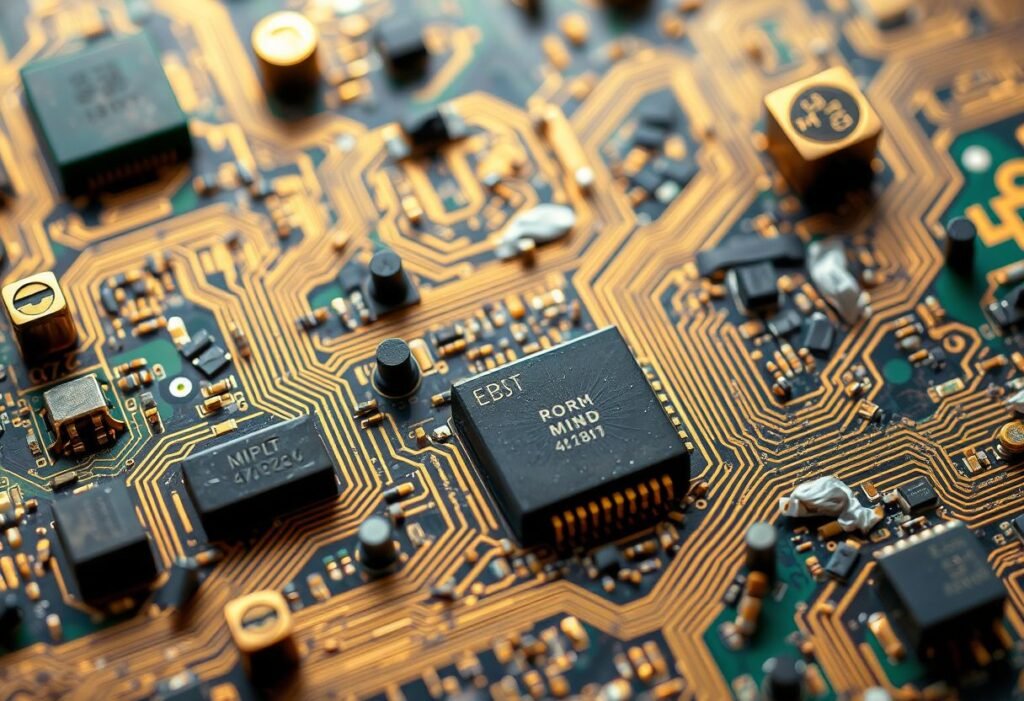This article discusses an innovative approach by The Royal Mint in England to extract precious metals from obsolete circuit boards, showcasing the intersection of technology and recycling.
Transforming E-Waste into Valuable Resources
The Royal Mint has embraced a groundbreaking method to recover gold from discarded circuit boards, reflecting the growing trend of e-waste management. This initiative is powered by a proprietary chemical process developed by the Canadian company Excir. The conversion of old electronics into precious metals not only mitigates the environmental impact of electronic waste but also creates a sustainable source of gold that can be reshaped into exquisite jewelry pieces. By utilizing this process, the mint is pioneering a new path in both waste management and luxury goods.
The Role of E-Waste in Sustainable Development
E-waste is emerging as a critical resource in the context of sustainable development. As technology evolves and electronic devices become obsolete, millions of tons of electronic waste are generated annually. The Royal Mint’s project highlights the necessity of recycling these materials to prevent them from polluting landfills and environments. Furthermore, this approach aligns with global sustainability goals, where recycling metals like gold can help to reduce the need for mining, preserving natural landscapes and ecosystems.
Innovative Techniques in Gold Extraction
The method employed by The Royal Mint involves a series of advanced chemical processes that selectively extract gold from circuit boards. This innovative technology not only increases the efficiency of gold recovery but also minimizes the ecological footprint usually associated with gold mining. By converting what would otherwise be waste into valuable materials, The Royal Mint exemplifies how traditional industries can adapt to modern environmental challenges.
From Circuit Boards to Jewelry
After the extraction of gold, The Royal Mint transforms the harvested material into stunning jewelry pieces, thereby adding an artistic dimension to recycling. This process gives a second life to materials that would otherwise be discarded, appealing to eco-conscious consumers looking for sustainable alternatives in luxury goods. The creation of jewelry from e-waste is not only a statement of environmental sustainability but also a creative exemplification of how waste can become highly sought-after products.
The Economic Benefits of Recycling E-Waste
Recycling e-waste offers significant economic benefits, as evidenced by The Royal Mint’s pioneering project. By deriving precious metals from old electronics, the mint can operate more sustainably while also tapping into a profitable market for gold jewelry. This innovative approach reduces dependence on traditional mining operations, which are often hindered by geopolitical issues and environmental concerns. The financial implications of this project could pave the way for similar initiatives across various industries, demonstrating the economic viability of recycling e-waste.
A Sustainable Future for Electronic Waste
The Royal Mint’s initiative is a testament to the potential of recycling e-waste in shaping a more sustainable future. As awareness about electronic waste grows, the importance of innovative recycling methods becomes increasingly recognizable. The project not only illustrates a successful paradigm shift in the processing of electronic waste but also encourages other organizations and industries to explore similar paths. By highlighting the value hidden within discarded electronics, The Royal Mint sets a precedent for responsible resource management in an ever-evolving technological landscape.





















